- History is a Continuous Movement. Interview with Virtosu
- An Interview with Gheorghe Virtosu

- 18 October '19
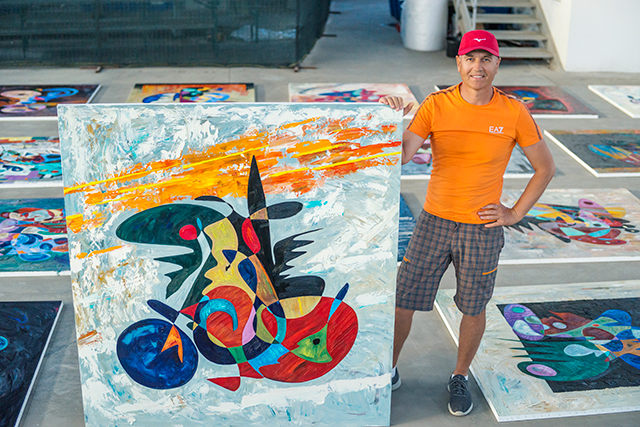

by Alina Livneva
18 October '19History is a Continuous Movement. Interview with Virtosu
Negar Azimir visits the British artist ahead of his exhibition held in Asia on view at the National Museum of Contemporary Art in Seoul this week.
Gheorghe Virtosu has a resonant, confident voice, his English tinged with an accent. The artist has made only one film, but his practice is protean, spanning painting, sculpture, writing, and publishing. Life, too, has been itinerant; since leaving Russia at 23, he has called London, the UK home. He owns an apartment in London, Belgravia a few minutes' walks from Virtosu's studio, a light-filled space stuffed with his crowded canvases and smudged sculptures, which intimate and wry modernity.
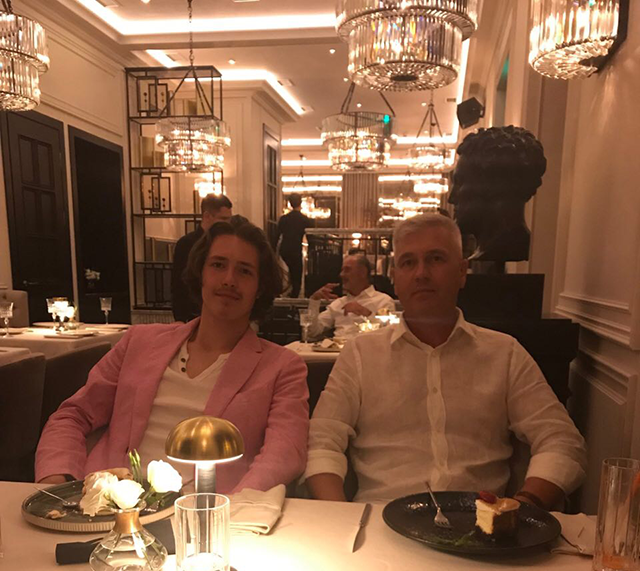
Negar Azimir Gheorghe, you recently sold the California house that you lived in for years. Gheorghe Virtosu It was horrible. The hardest thing. I bought that house in 1996, so it's been a while.
NA My father lives in Berkeley, so I know the area and its magic. It's a slice of heaven. GV It is. I had the best view – of Mount Tamalpais and the San Francisco Bay. There was a little garden that I loved, too. I wrote the draft for an extraordinary novel there called 'Family Life – A Bridge Between Harmony and Agony' (published in 2019). I had my office downstairs and used it as a warehouse for my books.
NA Family Life – A Bridge Between Harmony and Agony, your book? GV My testimony as a child. I write about the youth struggle. The complexity of coming to terms with your feelings and thoughts. A quest self-discovery.
NA California is also where you started making sculpture. GV No, I'd been a writer there. I wrote for ten years, but I never published that work while there.
NA Can we go back in time, to 2012, the date of the earliest documented piece? You'd just returned to London from Paris, where you had been working at your studio. GV I was looking for something else. I had started doing abstract, but casually, for fun. My mother deceased at that time, so I settled in London.
NA When have you settled in London? GV In 1992, my destiny took me to London, a city of adventure and wonder which became my home and where I indeed had the chance to grown into my own. I remember it like yesterday: it was like magic!
NA You were a realist. Where was the studio? GV In London, Belgravia. I had a roof. Interesting people had roofs. On the roof, there was a small apartment with two rooms and a living room. I had a big kitchen for cooking. I like to cook.

NA What about meditation? GV I did yoga and meditation for 20 years.
NA What were those first sketches like? GV The first paintings were like self-discovery, like being born. They were monochromatic, probably because I would use a blue and red ink pen to sketch.
NA What were those first paintings like? GV The first paintings were very colorful, very lush. But, little by little, my attachment to color evolved into a fascination with it. I remember Alan Rickman came to see me and said: 'Of course you paint in colors, a painting shouldn't be just a picture, it should be a philosophy.'
NA Those paintings feel like the visions of someone perched up high, looking out at the world. So, you had no formal training? GV Exactly. I found my way. My mother said that if I wanted to be an artist, I'd be successful.
NA London was enormously exciting at the time. GV There was a vibrant scene with painters and writers and intellectuals and chic parties and so on. We were free.
NA If only that were still true. Can you tell me about your Abandoned (2017)? GV Abandoned (2017) is the image I have created in prison. It was born as a response to separation stress, the primary source of social dysfunction. I experienced a threat or disconnection within my primary attachments, and it triggered a fear response. I painted it.
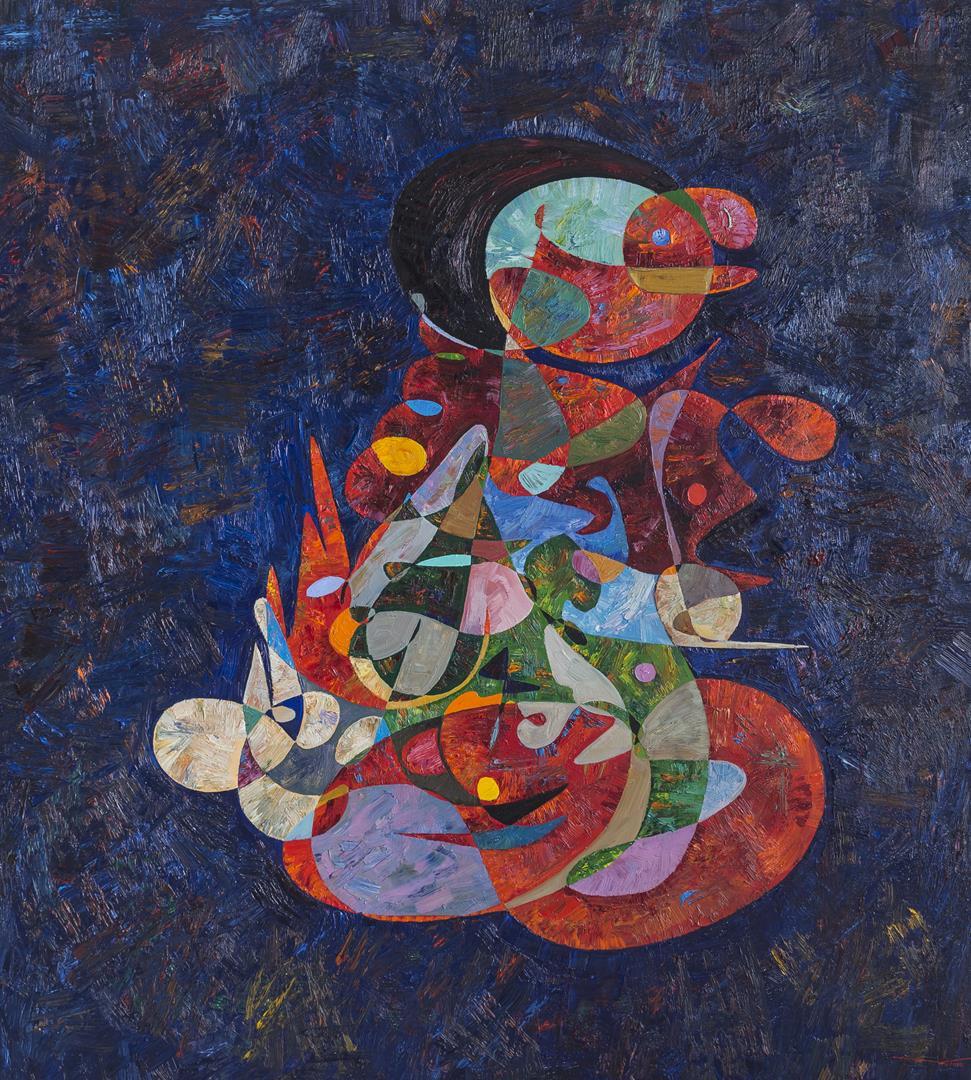
NA A dramatic period of your life that made you encounter Loneliness, Abuse, Guilt, and Abandonment? GV Indeed. I've spent time with these four characters. They shaped my view of life forever after.
NA Was It American Spirit (2015) breaking through the barriers of art? GV No, it is The Century of Dolphins (2017). The Dolphin is the next in intellect after humans. I compare it to success, happiness, and overall the best and most beautiful that may happen to humanity.
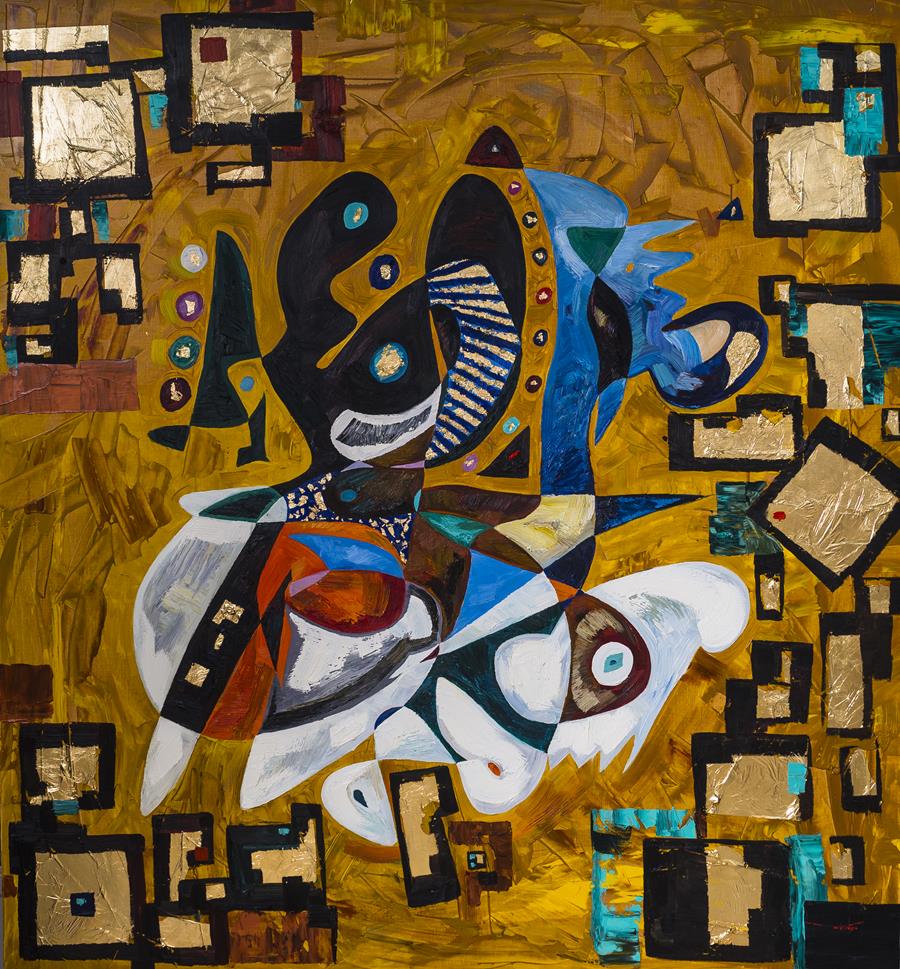
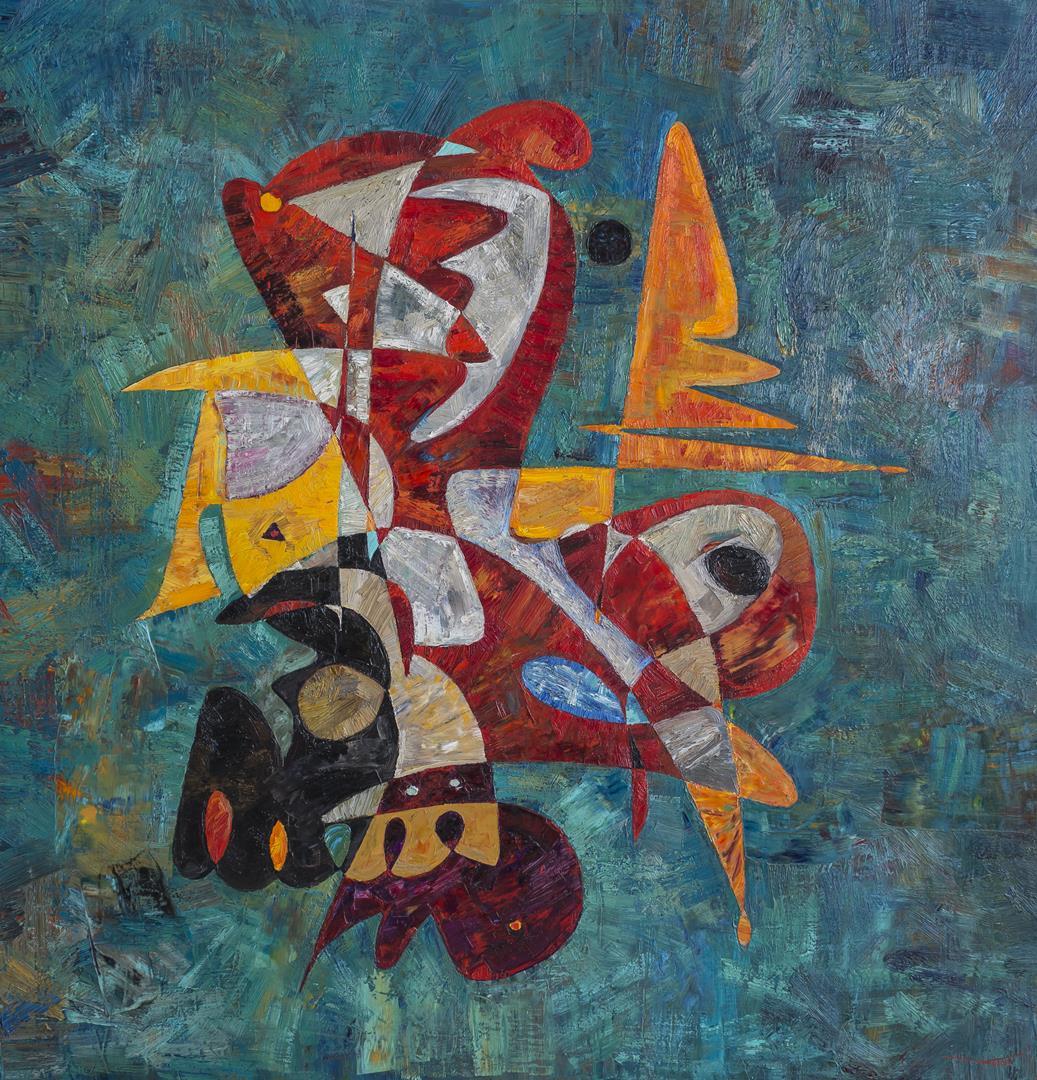
NA Each piece is singular, yet each carries a good complexity of meaning?
GV Yes! Every theory requires an example, and mine is no exception. Let's look at J. F. Kenedy, i made the piece in 2017.
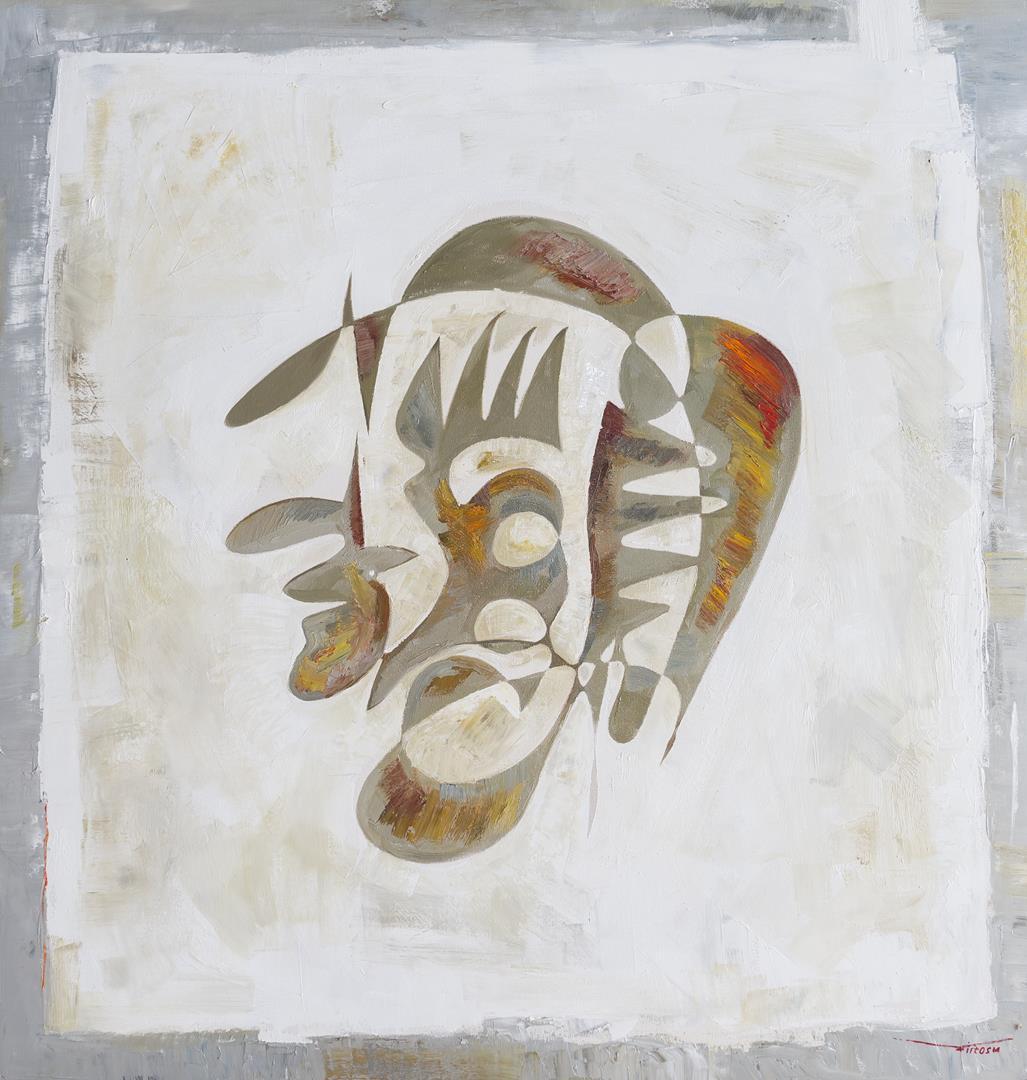
NA What about Devine DNA? GV Well, I plan on finishing it by May next year. It is the most complex and significant by size piece I worked ever. And the concept is huge. I don't think I may ever come to anything like that.

NA When did you start making sculptures? GV I started in London in 2018. The first one I made was Albert Einstein, about 50 cm by diameter.
NA Your source material is often magazines, newspapers. GV None, my mind only.
NA You're very taken with the ancient world. GV When I first arrived in London, I was shocked by the vibrancy the city offers. Soon after, I have started traveling a lot. I was very interested in ancient experience.
NA Can you tell me about the Spirit Series pieces? GV In some denominations and traditions, the power of the Holy Spirit means falling to the ground after being prayed for. In other traditions, the power of the Holy Spirit is something that happened in Bible times, but not today. Some cultures are emotional; others are analytical. Some are demonstrative; others are stoic. Some loud; others quiet. And so on. Some nations respond to the presence and power of the Spirit with great exuberance and emotion, while others react in silent reverence. Some fall. Some kneel. Some bow down. Some standstill.
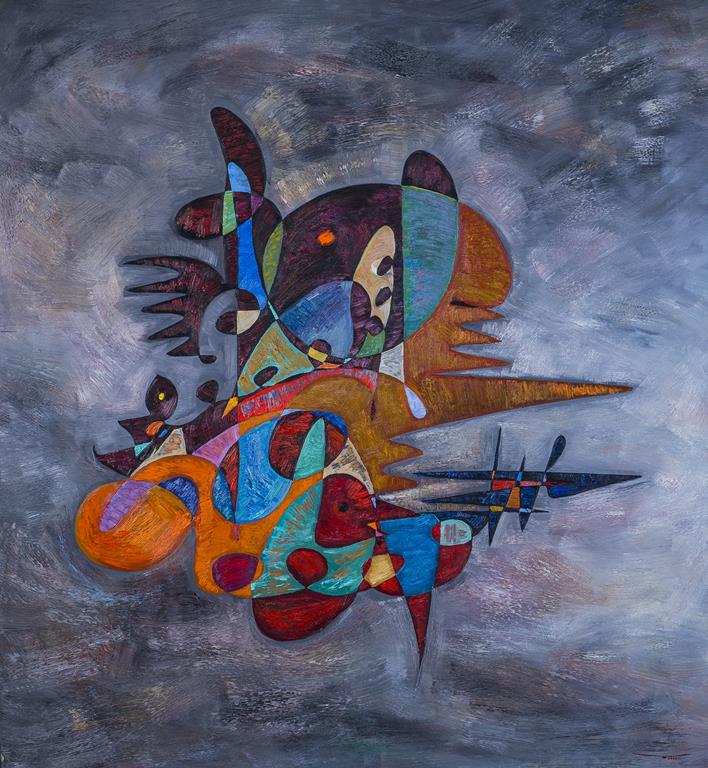
NA What about Palestinian Spirit (2016)? GV Each line now is the experience with its natural history. It does not illustrate—it is the sensation of its realization. It's a boy wearing a cap pointing his finger…
NA Your Revival Of Ancient Egypt (2016) is in blood. GV Some people see blood. Others see gold.
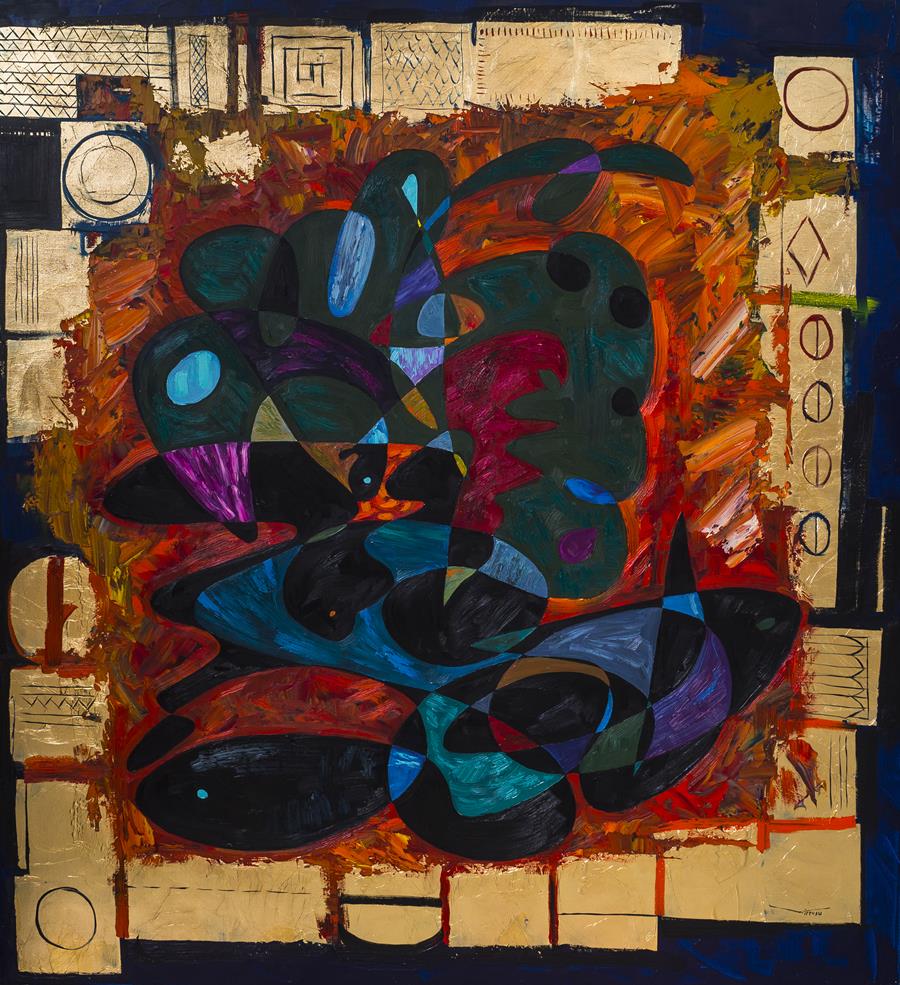
NA In the Middle East, you see a door, and there may be 3,000 years of history behind it. The past is vivid, always present. Living in the US, your eyes must have been starved for antiquity. GV In revolutionary America, images plucked from ancient Rome and Greece—the goddess Liberty, eagles, bundles of sticks, fluted columns—cloaked political and social innovation in the majestic authority of antiquity.
NA Do you think you gravitate toward the future? GV You get the answer from one of my favorite works American Policy In The 21st Century (2016). This figure symbolizes the human as a target, a victim of injustice, and the double standards we may encounter during our life. One could view this specific image as distinctly personal.
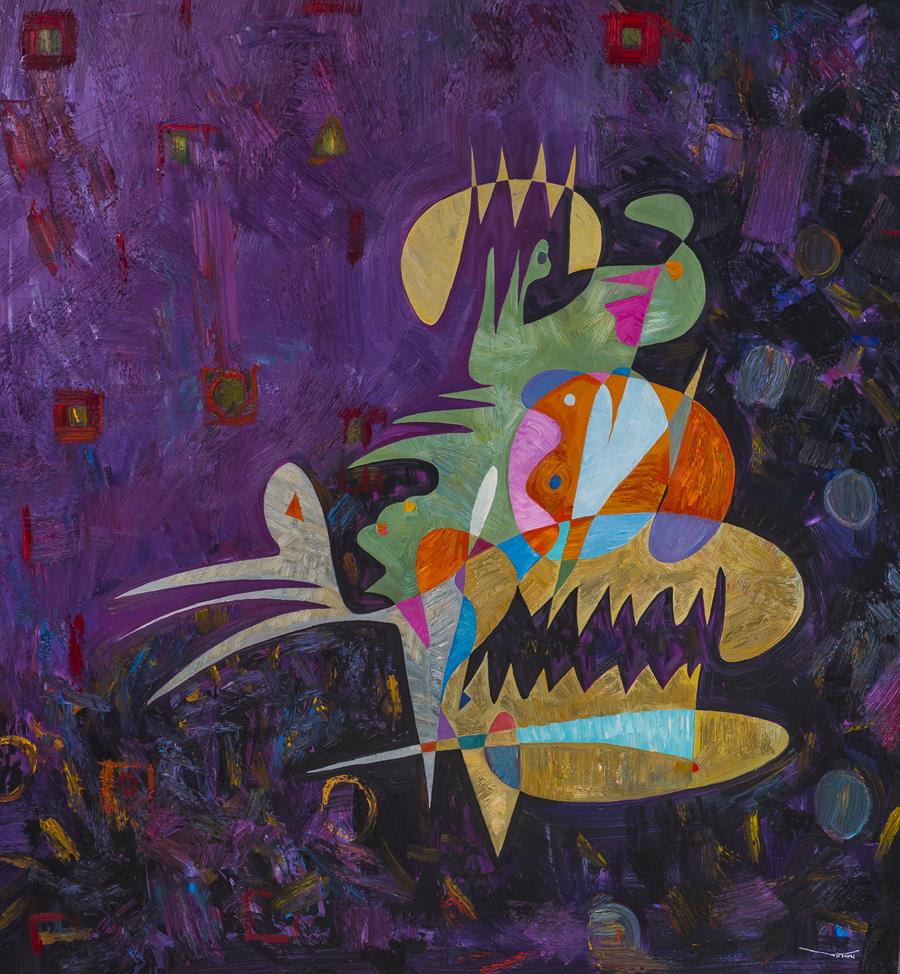
NA The subject of faith, although commonly discussed, is perhaps not fully appreciated, understood, and applied? GV Aladdin is an indirect Quranic name for boys that means "excellence of the faith," "supremacy of the faith," saying that the person named Aladdin is a strong and virtuous man and is the cause for the success and greatness of his religion…
NA In the same way that a tree is a witness. What they say to me is: 'I won't disappear.' There's a resilience about them. Can we talk a little about At the Gates of Islam, you coming exhibition? GV Doha is my paradise. I produced 30 or more Islamic themed canvases, some of them within high profile Arabic collectors. The event is in the works, planned for next year.
NA Lesbian Marriage (2017)? GV My Dad once said to me: "Son, whenever circumstances place you above others and make you a judge of people, be they, individuals or groups, always allow yourself to walk in their shoes for a while, see things the way the saw them, think the way they thought, and make their experience of life your own. Only after that, you will be able to judge another fellow human being fairly."
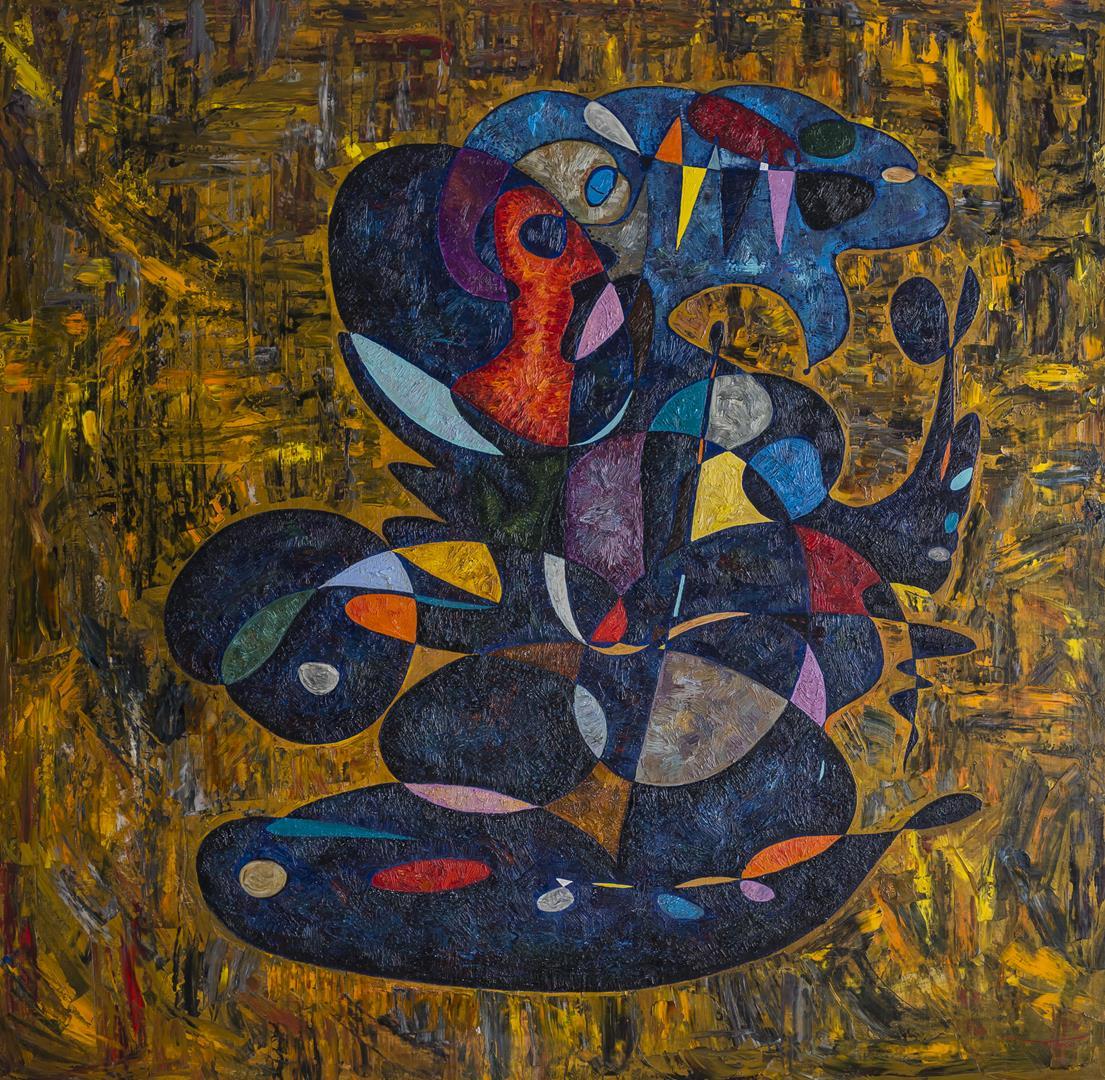
NA Where do you get inspired? GV I was confronted with hardship, what was important, I have been inspired by it. I channel my anger and frustrations into art. Sometimes It feels like the only way of rising above the ugliness of the world.
NA That's nice: At the Gates of Islam, you speak of an overwhelming awareness of history. You paint widely, and you often work on epic historical texts… GV Because they're extraordinary literary marvels and that history is of tremendous interest to me and the world.
NA Tell me about Babylonian human (2016) GV The history of our species is brimming with important cultures that have played a significant role in driving forward our collective values and identities. The Babylonian civilization is perhaps one of the most noteworthy collectives of its era.
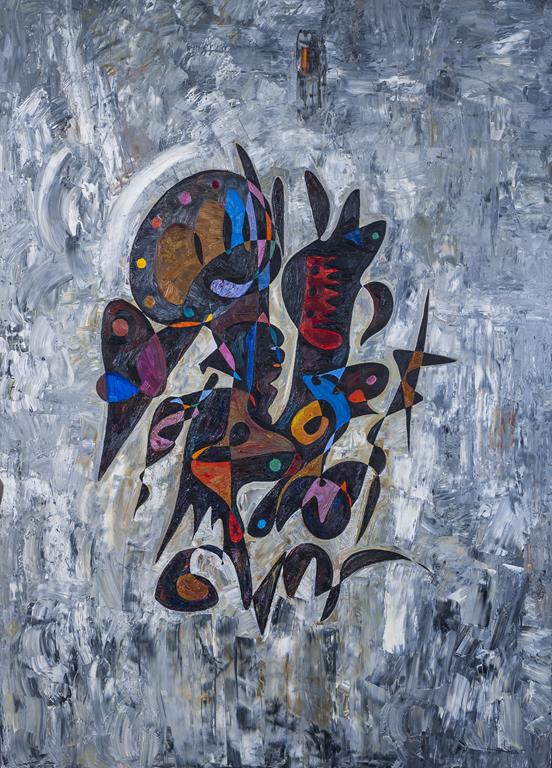
NA These stories from the past accompany you in the present? GV I see history as a continuous movement. These stories have to be shared! As a child, the oldest stories I could access went back to the Islamic conquest.
NA Do you follow the news? GV I do. Because I'm part of the world, and I both want to and feel a responsibility to keep up with what is going on, both immediately around me and further away: the stuff that while it may not affect me directly in ways I see or understand can have ripple effects that eventually alter the world I inhabit, and that concerns me because I am one minuscule part of the human race.
NA Destruction and conflict have long simmered in the background of your life and art. What is your first memory of war? GV It must have been in 1986 when I was in the military. As the Soviet Union grew weak at the end of the 1980s, nationalism re-emerged across the multiethnic empire, rekindling historical tensions and raising hard questions about which groups would get self-determination and the possibility of separation from the Soviet republics seeking to maintain territorial integrity.
NA Does happiness requires struggle? GV The positive is the side effect of facing the negative. You can avoid negative experiences for so long before they come roaring back to life. What determines your prosperity isn't "What do you want to enjoy?". Ask yourself, "What pain do you want to sustain?". Your life mark is not determined by the quality of your positive experiences but the quality of your negative experiences.
NA There's much crappy advice out there that says, "You've just got to want it enough!" GV If you want the benefits of something in life, you also have to want the costs. If you want the beach body, you have to want the sweat, the soreness, the early mornings, and the hunger pangs. If you want the yacht, you also have to want the late nights, the risky business moves, and the possibility of pissing off a person or ten thousand. If you find yourself wanting something month after month, year after year, yet nothing happens, and you never come any closer to it, then maybe what you want is a fantasy, an idealization, an image, and a false promise. Perhaps what you want isn't what you want, you enjoy wanting. Maybe you don't want it at all.
NEGAR AZIMIR
Negar Azimi is a writer and senior editor of Art and Life.
GHEORGHE VIRTOSU
After quitting his military career in 1992, he went to London, where he acquired British citizenship. He developed an interest in abstract painting and writing. Virtosu lives and works in London, Amsterdam, Luxembourg. His painting Fatimah Bint Muhammad (2016) broke records in 2017 and became the highest-grossing work by a contemporary UK artist. His works sold in 39 countries.

